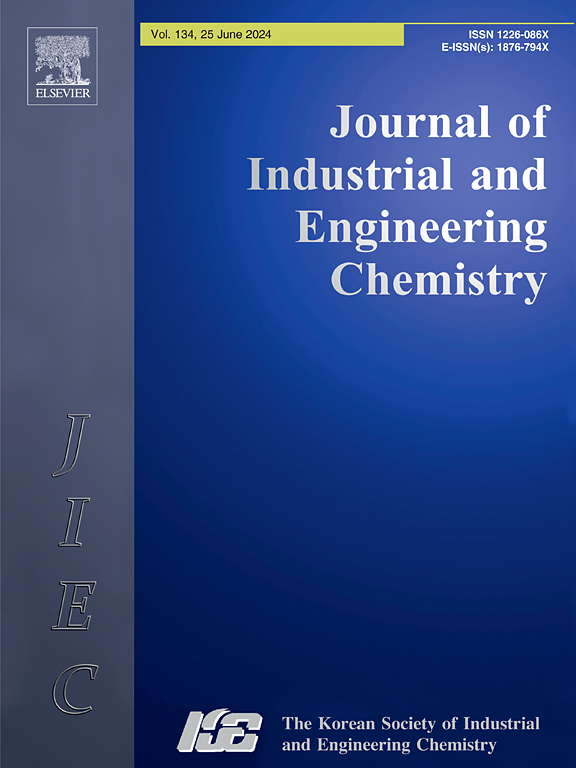Lipid droplets targeting fluorescent probes with AIE properties for the diagnosis of fatty liver tissue
IF 5.9
3区 工程技术
Q1 CHEMISTRY, MULTIDISCIPLINARY
Journal of Industrial and Engineering Chemistry
Pub Date : 2024-11-20
DOI:10.1016/j.jiec.2024.11.038
引用次数: 0
Abstract
Lipid droplets (LDs), as essential organelles within cells, play crucial roles in various physiological and pathological processes. Therefore, the precise detection of LDs in living system is of great importance for biomedical research. In this paper, a series of fluorescent probes WJ1–WJ4 were constructed by introducing various electron-donating or electron-withdrawing groups into coumarin derivatives for visualizing LDs. WJ1–WJ4 exhibited typical aggregation-induced emission (AIE) characteristics and also possessed desirable lipophilicity, high photostability, and low cytotoxicity. Moreover, it was found that probe WJ1 could ultrafast penetrate cells (∼10 s) and specifically target LDs in live cells by wash-free procedure, which was capable of monitoring the accumulation and dynamical changes of LDs in living cells. Importantly, WJ1–WJ4 demonstrated the ability to distinguish fatty liver through tissues imaging. The excellent image performance renders these LDs-probes as powerful tools for early diagnosis of non-alcoholic fatty liver disease (NAFLD).

具有AIE特性的脂滴靶向荧光探针在脂肪肝组织诊断中的应用
脂滴作为细胞内必不可少的细胞器,在各种生理病理过程中起着至关重要的作用。因此,在生命系统中精确检测ld对生物医学研究具有重要意义。本文通过在香豆素衍生物中引入各种给电子或吸电子基团,构建了一系列荧光探针WJ1-WJ4,用于显示ld。WJ1-WJ4具有典型的聚集诱导发射(AIE)特性,并具有良好的亲脂性、高光稳定性和低细胞毒性。此外,发现探针WJ1可以超快穿透细胞(~ 10 s),并通过无水洗程序特异性靶向活细胞中的ld,能够监测活细胞中ld的积累和动态变化。重要的是,WJ1-WJ4显示了通过组织成像区分脂肪肝的能力。优异的图像性能使lds探针成为早期诊断非酒精性脂肪性肝病(NAFLD)的有力工具。
本文章由计算机程序翻译,如有差异,请以英文原文为准。
求助全文
约1分钟内获得全文
求助全文
来源期刊
CiteScore
10.40
自引率
6.60%
发文量
639
审稿时长
29 days
期刊介绍:
Journal of Industrial and Engineering Chemistry is published monthly in English by the Korean Society of Industrial and Engineering Chemistry. JIEC brings together multidisciplinary interests in one journal and is to disseminate information on all aspects of research and development in industrial and engineering chemistry. Contributions in the form of research articles, short communications, notes and reviews are considered for publication. The editors welcome original contributions that have not been and are not to be published elsewhere. Instruction to authors and a manuscript submissions form are printed at the end of each issue. Bulk reprints of individual articles can be ordered. This publication is partially supported by Korea Research Foundation and the Korean Federation of Science and Technology Societies.

 求助内容:
求助内容: 应助结果提醒方式:
应助结果提醒方式:


